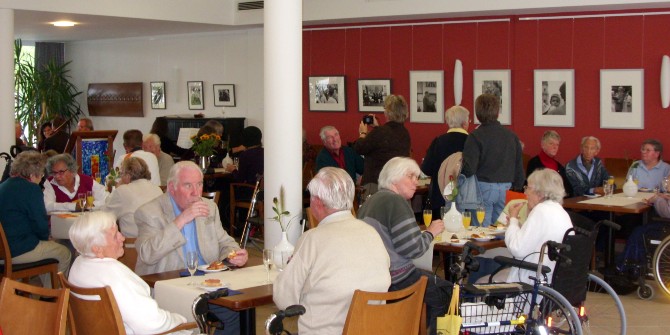As many predicted, the pandemic led to a demand for bigger homes and gardens. But with supply limited by Britain’s strict planning regulations, and the market propped up by a stamp duty waiver and the furlough scheme, prices for detached houses have risen. Contrary to received wisdom, Paul Cheshire, Christian Hilber and Olivier Schöni (LSE) find in a new Centre for Economic Performance analysis that they rose most in areas close to the centre of London.
The British care very much about what happens in housing markets. Older house owners care because so much of their personal assets are tied up in housing: the young care because they feel left behind and are increasingly desperate to be able to afford decent homes. So there has been plenty of speculation about the effects the pandemic would have on the housing market – some of which has proved to be wide of the mark.
At the start of the pandemic, we anticipated that office closures and the fear of packed commuting would lead to an increase in the demand for home working with the implications that has for space inside the home. Like most, we thought in the short, even medium term, this would lead to a degree of movement out of packed cities – perhaps with an increase in demand for very small living spaces in central cities, to support 2 or 3 days a week in the office. This implied long distance moves, jumping the Green Belt and longer, less frequent, commutes. It also implied a fall in demand for (so price of) centrally located, smaller houses compared to larger houses in the outer suburbs or ex-urbs.

Although this has become a kind of conventional wisdom, with headlines such as The Race for Space and a hyping up of the demand for large country houses in the Cotswolds, further reflection, and now evidence of what has actually happened in the housing market over the past year, has led to significant changes to our judgements. Partly these changes have been driven by government actions to prop up the housing market, delaying the downward correction in prices, personal incomes and the economy. This change in emphasis, however, is also partly because in Britain one can never underestimate the impact of planning policies on house prices.
The most striking result of the onset of the pandemic was an almost total halt to activity in newly constructed houses: housing completions fell from 46,000 in the second quarter of 2019 to 16,000 in the corresponding quarter of 2020. After a brief but abrupt fall, transaction prices of detached and semi-detached houses quickly recovered after the immediate COVID-shock and were above all previous highs by late 2020. Although prices for the smaller house types did recover somewhat, this was far less pronounced, and for flats and maisonettes prices never got back to their pre-COVID levels at all.
It may be the case that the price of a few large country houses increased. However, the really large price increases in 2020 compared to 2019 were for detached houses as close as possible to the centre of London, so not remote locations. That the increase was confined to detached houses is of course no surprise, and there were increases for large houses up to 25 miles outside central London. But that the price increases in the later part of 2020 were so large in both absolute and relative terms in central areas is wholly against conventional wisdom.
Housing is seriously unaffordable in Britain
The ability to translate an increase in preferences into purchases is of course constrained by incomes. London has an exceptionally unequal income distribution and the evidence is that the pandemic has made the rich (and old) even richer relative to the rest of society. Moreover, the ability to buy the most sought after housing is controlled by people’s incomes relative to those of others competing in the market, not by their absolute incomes. So a post-pandemic stretching of the income distribution gave even more market power to the richest households in London. They seem to have concentrated that power on escaping the effects of the worst impacts of the lockdown and the pandemic and the increasing demand for home working by buying larger, more central houses.
A larger house in a central location not only allows more space to work at home but makes it easier to avoid the tube or buses, to walk or cycle about the city and to the office when that is necessary. It might also reflect a bet on the longer term bounce back of cities in general and London in particular. But it is important to note that relative to the total market, the number of detached houses transacted in central markets is small, and they are likely bought by the seriously rich.
What we appear to observe in the data is a trend, long predating the pandemic, towards the construction of more detached houses with larger gardens beyond London’s Green Belt. This is subject to the caveat that we only know about garden sizes in detail for houses inside the GLA area. This trend would appear to reflect an increase in the preferences for more living space and larger garden sizes. Detached houses are built further and further out, because more central locations are – as a consequence of strong demand in conjunction with a dysfunctional planning system limiting supply – simply no longer affordable.
Second, the main short-term effect of COVID has been to slow down housing construction – including the construction of detached houses. Put differently, housing supply during 2020 was even more inflexible with respect to price than in the normally inflexible state of Britain’s housing market. As a consequence, the location and form of houses to accommodate the change in tastes for space simply could not adapt. COVID may have induced stronger preferences for more living space and access to gardens for most people. However, the available stock of such houses has roughly remained unchanged in the short term – hence the scarcity-driven increase in their prices.
Without radical reform, space in housing and gardens – even just houses – will increasingly become the privilege of the rich
Demand for housing is most importantly determined by incomes. The actions the Chancellor took early in the pandemic to support incomes – the furlough scheme and the scheme for the self-employed together with the support for businesses – effectively supported personal incomes very substantially. There were in addition specific measures directed at supporting activity in the housing market and house prices. The Stamp Duty Land Tax scheme started in July 2020 and was originally due to end on 31 March 2021, but in the March Budget it was extended to June 30 2021. This was worth up to £15,000 on a £500,000 house, with bigger discounts for more expensive houses up to the ceiling of £500,000. There were other measures too – aside from the extraordinarily low interest rates – such as potential mortgage payment holidays for 6 months to those who had lost income from COVID. These measures prevented a downturn in the housing market and added further pressure to the pent-up demand for larger, more expensive houses.
There is now a significant risk of policy trying to prop up house price inflation. These policies are costly to the government and eventually are likely to be reversed. If this coincides with an economic downturn there is a significant risk that the policy ends up triggering a housing market downturn.
In principle, of course, the British obsession with booming housing markets as a symptom of economic health is absurd. As two of us have frequently argued, housing is seriously unaffordable in Britain. The problem is the reasons for price reductions and the context. In a context of falling disposable personal incomes, a fall in house prices may not make housing any more affordable.
In the longer term, we expect cities to reassert their pull. They have survived far worse crises than the pandemic – think of the two years 1665 and 1666: first the plague, killing 15 to 20 percent of London’s population, then the Great Fire destroying most of the city and a good chunk of its suburbs. But London was back and booming within 20 years. As cities and incomes recover, a rising cost of space looks likely in the long term, especially if the British planning system is as restrictive of space in the future as it has been over the past 75 years. Our system of property taxes and local government finance adds to this problem, since it continues to penalise local authorities which permit residential development. Without radical reform, space in housing and gardens – even just houses – will increasingly become the privilege of the rich.
This post represents the views of the authors and not those of the COVID-19 blog, nor LSE. It is an edited extract from The pandemic and the housing market: a British story, part of the Centre for Economic Performance analysis series.






There has been a pressure rising from perceived financial instability and mediocre interest returns in other investment markets. The reaction has been for people preferring to upgrade what they have or convert market investments into brick and mortar investments. It has been more about protecting what value you have rather than making a quick buck. Unfortunately, as you rightly coined the term bubble, there is a part irrational “not wanting to be left out” (Behavioural Economics), punted by estate agents, that causes escallated growth.